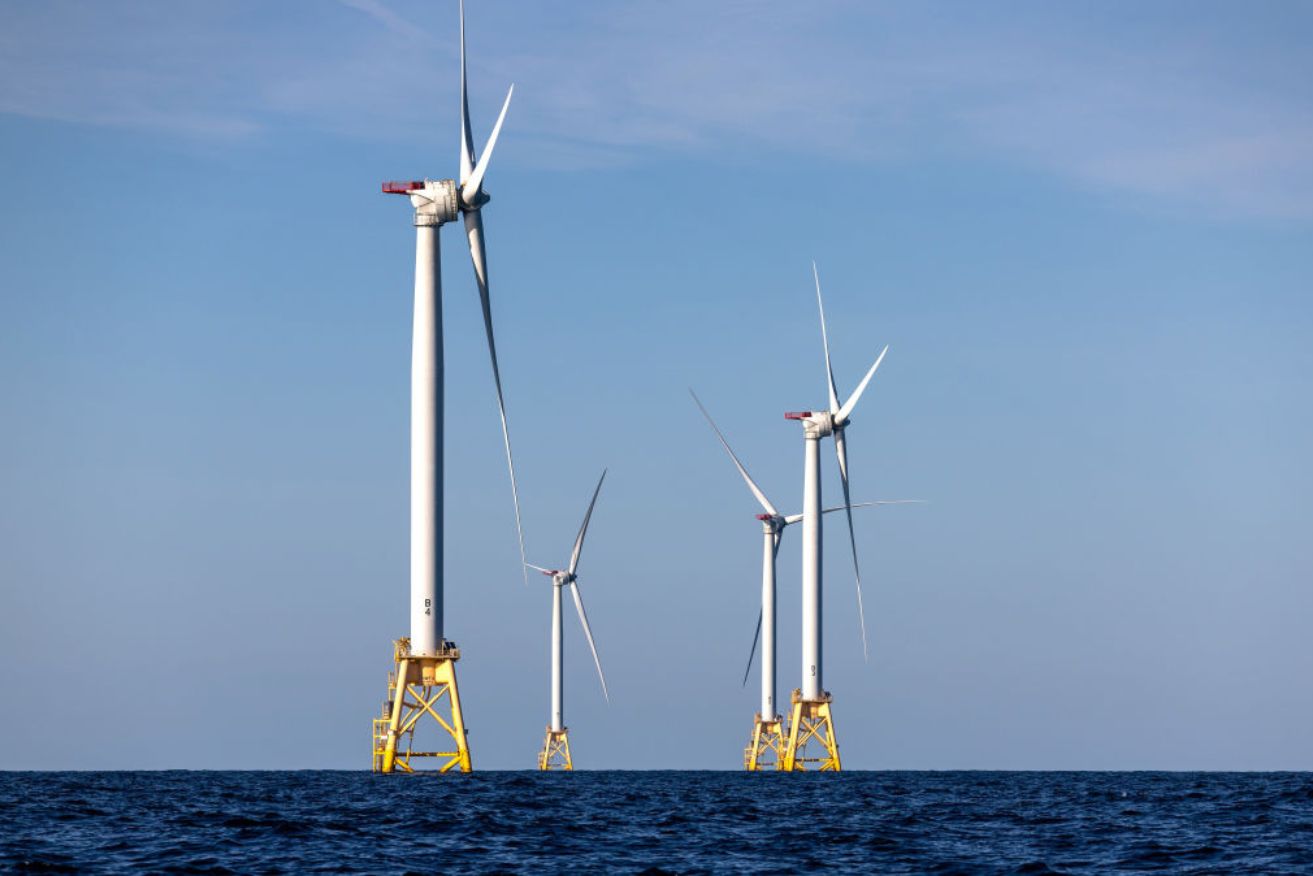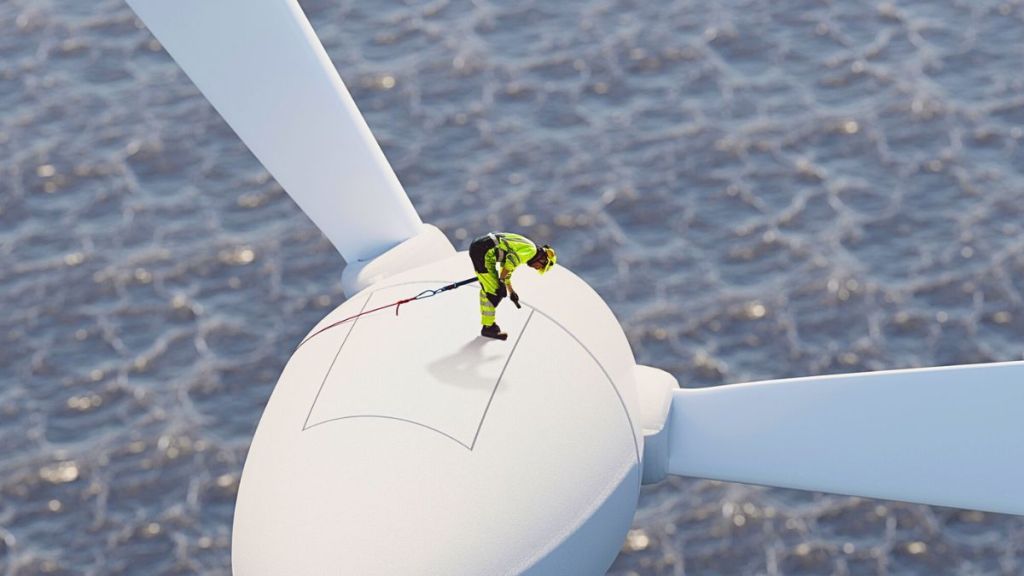The air is blowing hard and hot in the offshore wind debate


Could energy created by the wind be key to Australia's renewable future? Photo: Getty
The air is blowing hot with commentary from would-be born-again environmentalists like Donald Trump and Peter Dutton about the supposed (as distinct from apparent) risk to the environment from the offshore wind power generation industry.
Traditional power generation occurs, generally, by means of a source of energy driving a turbine, which spins.
Why coal has been important
In so doing it generates electricity that can then be harnessed and used for whatever other purpose we like.
This is what fossil fuels provide. Be it coal or gas, the fuel is burned to generate heat, which drives a turbine that generates electricity.
In Australia, it’s mainly coal which does most of that work, providing a steady and relatively reliable source of electricity which can slowly be ramped up or down – subject to the energy needs that the market demands.
In this way, coal generation provides power to meet the minimum, or “base load”, demands for the entire country.
And that has been the “beauty” of coal. It has always been there to meet the needs of the market consistently and dependably.
Gas is then used to supplement that base load, as the gas turbines can increase or decrease output more quickly to accommodate spikes in demand that might overwhelm the coal generators in the short term.
This may all be a slight oversimplification, but that is essentially how power is generated and electricity security has been provided in Australia with the use of fossil fuels.
A perpetual puzzle
It wasn’t long ago that one obstacle which stood in the way of a clean-energy transition in Australia was finding a renewable energy power source that could reliably fill the hole in “base load” power generation that would be left by the closure of coal power stations.
Hydroelectric generation, which involves the flow of water being the energy source that drives those generating turbines, does provide steady and reliable “base load” generation.
That’s what Tasmania uses and that’s what the mainland of Australia has in the Snowy Hydro scheme.
One issue with hydroelectric generation is that there’s not enough of it.
There are only so many big powerful rivers around, and we don’t want power stations on all of them, so they’ll never be enough to provide all that we need.
Solar can’t do it either. Base load power needs are large and round the clock, and the sun only shines during the day, and even then, not everywhere and not all the time, so batteries are required as a storage solution when the sun isn’t there.
Then there is wind. Like the sun, the wind only blows when, and where, it blows.
One of the places where it does blow, most of the time, is in some parts of our oceans.

The wind always blows on our oceans, making it a reliable source of power. Photo: Getty
Offshore wind – potential base load solution
It is helpful to look at current base load generation examples.
Australia’s largest coal-fired power stations, Loy Yang in Gippsland Victoria, and Eraring in the Hunter region of New South Wales have respective generation capacity of about 3.2GW and 2.8GW.
And of course, a gigawatt is a thousand megawatts.
So to close and replace Loy Yang for example, assuming that the demand remains constant at up to 3.2GW, that generation capacity will need to be found elsewhere.
Looking at solar as an alternative, you might wonder how much land would be required to install enough solar panels to generate that much power? Estimates vary between four and eight acres per megawatt for solar generation capacity.
If we use a figure of six acres per megawatt for the sake of this example, that means a solar farm large enough to meet the generation capacity of Loy Yang would cover 19,200 acres, or about 77 square kilometres.
But the sun doesn’t shine everywhere all the time and finding 19,200 acres to cover in solar panels wouldn’t be easy, which is perhaps at least one of the reasons why offshore wind is being considered as a viable base load alternative.
Proponents of the offshore wind industry cite what they say are more consistent wind conditions offshore as a significant advantage posed by this power generation method, because when it comes to base load power, consistency and stability is critical.
Scaling capability is another advantage, with multi-gigawatt projects proposed in key locations around the country, in most cases located relatively close to the coal power networks that they are intended to replace.
The Star of the South off the coast of Gippsland in Victoria, which is said to be the most advanced and most likely offshore wind generation project in Australia, has a projected capacity of 2.2GW. Newcastle Wind Project, located off the coast of Newcastle, is the largest currently proposed with generation capacity of up to 10GW.
Environmental concerns can’t be dismissed
Putting to one side scepticism of the veracity or legitimacy of concerns touted by Trump, Dutton and Barnaby Joyce, environmental concerns on any large-scale construction project cannot be simply dismissed. In Australia, they generally aren’t.
Recently in Victoria the Star of the South project suffered a setback when the Commonwealth’s Environment Minister Tanya Plibersek rejected a proposal for a wind turbine assembly facility in Hastings due to concerns the development would have on the local environment.
Controversy frequently surrounds the development of large construction projects, and there will always be groups mobilising in opposition, but to continue making sustainable progress towards the transition to renewable energy, governments will need to carefully balance stakeholder needs to ensure that the right projects can happen at the right time.
Scott Riches is a former union official with the Electrical Trades Union Victorian branch, and a practising employment lawyer. He is also a volunteer in the employment clinic at the Fitzroy Legal Service








